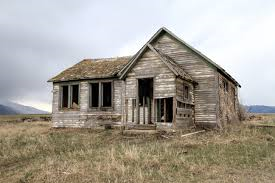Seeing through Layers like Blankets on a Cold Night
My father was am immigrant from Mexico. My mother a full blood Kiowa/Cherokee from Oklahoma. They worked the peanut and cotton fields when my sisters and I were young. I remember ducking the large rolling water sprayers in the fields; I remember the heat coming from the dirt onto my bare feet; and I remember living in abandoned farm houses in the Oklahoma fields. Let me tell you about cold nights. No, better yet, let me tell you about the warmth you can have from the thin layer of a blanket. As I make progress through the revision stage of my novel, Uncle Called Him Spider, I visualize odd and peculiar moments in my life. Here I am thinking about point of view, analyzing the spaces between first person narrative and third person limited omniscience, and I start to make the comparison of that space to the thin layer of a blanket on a cold night. Then I remember the farm houses.Odd how the memory works.So a few days ago I was living through a fictional space in my mind where I envisioned someone asking me, "Why did you write Uncle Called Him Spider in third person limited omniscient instead of first person?" They would go onto explain how the two forms aren't very far apart structurally. So many great novels are written in the first person. Yes, I actually visualize conversations like this. And, yes, I'm only a breath away from insanity, but only the good writers are.
As I make progress through the revision stage of my novel, Uncle Called Him Spider, I visualize odd and peculiar moments in my life. Here I am thinking about point of view, analyzing the spaces between first person narrative and third person limited omniscience, and I start to make the comparison of that space to the thin layer of a blanket on a cold night. Then I remember the farm houses.Odd how the memory works.So a few days ago I was living through a fictional space in my mind where I envisioned someone asking me, "Why did you write Uncle Called Him Spider in third person limited omniscient instead of first person?" They would go onto explain how the two forms aren't very far apart structurally. So many great novels are written in the first person. Yes, I actually visualize conversations like this. And, yes, I'm only a breath away from insanity, but only the good writers are. It's a good question. I'm glad the fictive personality in my mind asked. Why third over first? I think it goes back to the blanket on the cold night. So what does first person perspective do? It pulls the reader in close. You are directly inside the narrator's mind and you are watching what the narrator watches. You only experience what the narrator feels. You are under the blanket.So you're going to argue third person limited does the same thing. But I'm going to disagree with you. It does put you, the reader, inside the main character's mind. Yes, you feel what she feels and you get to hear her thoughts. But there is one thing first person doesn't offer: Freedom.With just a thin layer of distance, third person limited omniscient gives the reader a power lost to the first person POV. Because you are subconsciously noticing the "he said, she said" aspect of the writing, you are then subconsciously implementing the "he said, she said" mentality. Meaning? You cast judgment more readily. You are less likely to identify with the main character and more likely to criticize her.
It's a good question. I'm glad the fictive personality in my mind asked. Why third over first? I think it goes back to the blanket on the cold night. So what does first person perspective do? It pulls the reader in close. You are directly inside the narrator's mind and you are watching what the narrator watches. You only experience what the narrator feels. You are under the blanket.So you're going to argue third person limited does the same thing. But I'm going to disagree with you. It does put you, the reader, inside the main character's mind. Yes, you feel what she feels and you get to hear her thoughts. But there is one thing first person doesn't offer: Freedom.With just a thin layer of distance, third person limited omniscient gives the reader a power lost to the first person POV. Because you are subconsciously noticing the "he said, she said" aspect of the writing, you are then subconsciously implementing the "he said, she said" mentality. Meaning? You cast judgment more readily. You are less likely to identify with the main character and more likely to criticize her.
"The omniscient narrator is a bizarre technique, when you think about it, and no one uses it much anymore. But for the novels I want to write, it's the only approach that makes sense to me." -- by Min Jin Lee
Why? It's space. Being on the outside of the blanket you still feel the cold night, while the main character is cozy under the blanket. There's enough distance to analyze and criticize situations as the main character moves through the storyline. In essence, it empowers the reader to make their own conclusions without the main character trying to convince them otherwise.I'm going to take this a little deeper--just for food for thought. I think it may be an issue of control. If an author wants you to think a certain way about a character she will do anything and everything to persuade you, like using first person narration. Now, don't get upset at me for making this claim. If you go read the three free short stories on my website, you'll find three first person short stories. I write first person. But as I think about the novel I'm writing I can't help but wonder how much of it has to do with authorial control over the reader. Maybe I'm in a space of letting go, ready to give readers their freedom so I can have my own. Or...maybe I think way too much about this shit. :)
Support a Native owned Etsy shop, Allies United, where I offer unique merch for allies of social justice movements, like MMIW, Native Lives Matter and Black Lives Matter. Take a look inside my Etsy shop here: etsy.com/shop/AlliesUnited.
(The images used in this post were borrowed from Wikimedia and Wikipedia)
(Images were borrowed from pexels.com and terrain.org)